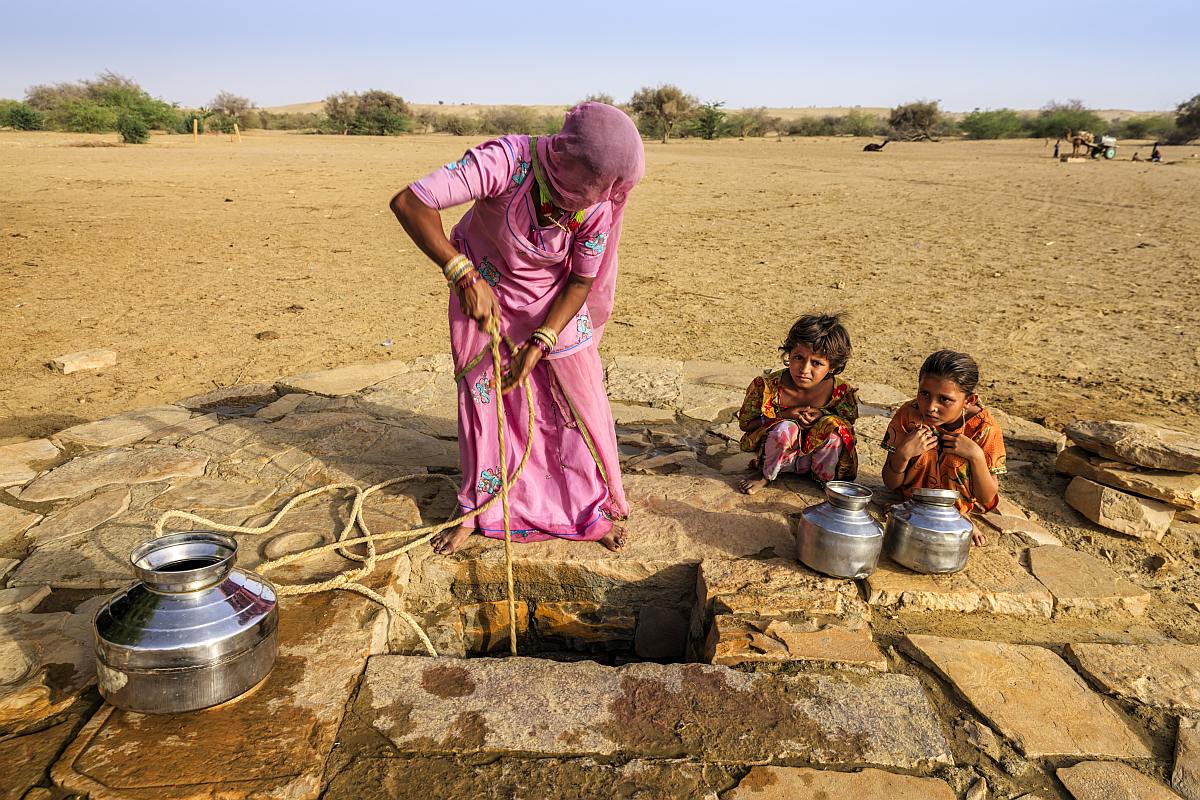Modi tranforming rural India with cutting edge technology: Jitendra
Union Minister Dr. Jitendra Singh on Saturday said that Prime Minister Narendra Modi's visionary initiatives seek to empower rural India with cutting edge technology.
The KAP (Knowledge, Attitudes Practices) needs to be adopted by the institutions in the pathway of digitalization of PACS which would bring a systematic approach of technology adoption as well as the expected outcome.

Representational image (Photo: iStock)
Cooperatives in India are all poised to witness a rapid transformation since the first cooperative law in India was enacted in 1904. With the new paradigms and changing contours of having a separate Ministry of Cooperation with Budgetary allocation for Cooperatives a renewed interest has spurted on the cooperative movement in India as a priority sector for growth.
A cooperative model used as an instrument of change at different points of time, particularly upto ninth five year plan (1997-2002) has contributed to the success of India’s development planning. It has inherent advantages in achieving the poverty alleviation, food & nutritional security, social integration, and employment generation. The cooperative sector is one of the key sectors of the economy having broader reach to rural India through their enormous network of credit and non-credit societies. Out of a total 8.5 lakh cooperative units in India, around 20% (1.77 lakh units) are credit cooperatives and remaining 80% are non-credit cooperatives involved in diverse activities viz. Fishery, Dairy, Producer, Processing, Consumer, Industrial, Marketing, Tourism, Hospital, Housing, Transport, Labour, Farming, Service, Livestock, Multi-purpose Cooperatives, etc. covering approximately ninety percent of villages. In terms membership about two hundred and ninety million farmers are enrolled in the cooperatives, comprising 72% in the credit cooperatives and 28% in the case of non-credit cooperatives (NCUI, 2018).
Advertisement
Primary Agriculture Cooperative Credit Societies (PACS) are the Short-Term Cooperative Credit Structure (STCCS) building blocks in the country. As per the Reserve Bank of India, as of 31st March 2018, there are 95,238 PACS with a membership of 13.2 crores covering 6,39,342 villages in India. These societies play a significant role in the financial empowerment of farmers and lower-income groups in the villages by meeting their financial.
Advertisement
Despite a good network and need for Institutions like PACS, there are languishing services dispensed through PACS. The International Cooperative Alliance (ICA) states that Cooperatives are based on the values of self-help, self-responsibility, democracy, equality, equity, and solidarity. In the tradition of their founders, cooperative members believe in the ethical values of honesty openness, social responsibility and caring for others. The core principle of Cooperative seems to have been compromised leading to erosion of dispensing financial and non-financial services. Insufficient funding defaults in repayment, scarcity of professional human resources and slow technological infusion have resulted in poor management information systems, transparency, laxity in internal control systems, malpractices leading to stagnated growth.
PACS as Multipurpose Societies
The Mehta Committee (1937) recommended the reorganization of Cooperative Credit Societies as ‘multi-purpose’ cooperatives in order to address mounting distress and discontent. Further, during pre-independence, the Agricultural Credit Organization Committee headed by Sir Manilal Nanavati as Chairman re-emphasized and recommended the State assistance in agricultural finance and conversion of all credit cooperatives into multi-purpose cooperatives in order to make them viable business unit.
Ministry of Cooperation has prioritized PACS from being just a credit society to a multi-services society that can act as a single window for credit and services. The revival also calls for reorienting PACS as service organizations and converging with the schemes related to agriculture budget 2022-23 e.g agriculture marketing, horticulture, edible oils, organic value chain development for the North East region, natural farming etc. PACS will be strengthened as Multipurpose societies by undertaking activities like procurement, storage and warehousing, processing, rural and agricultural logistic managements, market advisory and intelligence etc. However the “members’ economic participation” and “cooperation among cooperatives” as the key principles of cooperatives needs to remain centrality in current market and technology-driven economy.
Digitalization of PACS
A vital strategic step towards technology adoption and becoming business-wise viable is digitalizing of the PACS. An amount of Rs 350 crore has been earmarked in the union Budget 2022-23 for digitisation of Primary Agriculture Cooperative Societies. A plan to computerize 63000 PACS has been devised by the Ministry of Cooperation.
The digitization of PACs will aid in the implementation of many agriculture-related initiatives and ensure that farmers receive credit, fertilizers, and seeds in a transparent through digital inclusivity. Quality control through technology and innovation in PACS is also very much essential.
Diversifying the practice, innovating, collaborating in sharing knowledge, and using emerging technology are all essential for PACS to perform more effectively and sustainably in this digital universe of a cooperative. Aspects of Industry 4.0, such as big data, the Internet of Things, and blockchain technology, bring efficiency and trust in the delivery supply chain. It’s the right time to bring blockchain technology into the supply chain of spices, fisheries, cashew, saffron which are high-value and export-oriented products with a good engagement of members of cooperative societies. The need of the hour is to enhance digital literacy through consistent training and skill development of members of PACS. The KAP (Knowledge, Attitudes Practices) needs to be adopted by the institutions in the pathway of digitalization of PACS which would bring a systematic approach of technology adoption as well as the expected outcome.
The budget allocation for cooperatives indicates the focus of cooperatives as a driver of growth and prosperity. Leveraging on innovations, entrepreneurship, and training, it outlines how to leverage growth from the bottom of the pyramid and constantly build forward linkages and integration with sectors like education, health, agriculture, textile, small and medium enterprises, energy, environment.
Advertisement